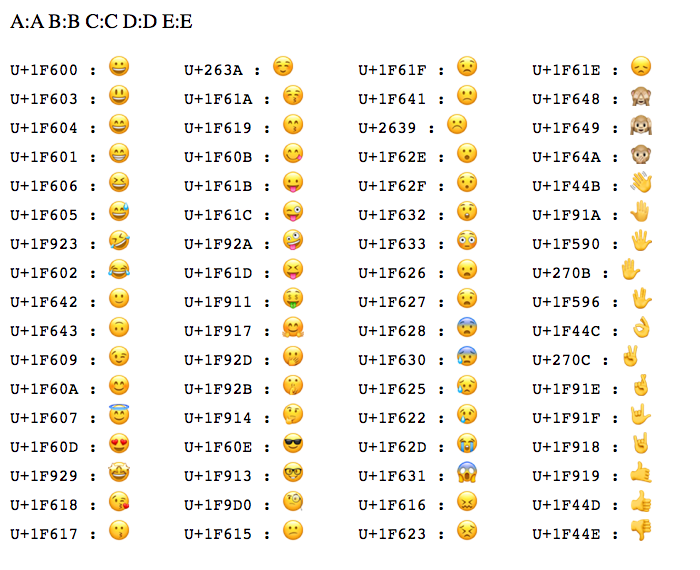
Feedback and contributions are always welcome. We’d like to thank these fine people for making possible. The content can be freely reused under the given terms. This means that operations like slicing a string, or getting a character at a given index may not work as expected.
#Text to unicode codepoints code#
Sometimes however a character is made up of multiple code points, as the examples above show. This is, a site dedicated to all things characters, letters and Unicode. An Unicode code point, what programmers often think of one character, often corresponds to what the user thinks is one character. Radical Stroke Count (Unicode) (kRSUnicode) Glyph for U+3C16 CJK Unified Ideograph-3c16 Type Other Letter for sentence and Other for word breaks. In text U+3C16 behaves as Ideographic regarding line breaks. In bidirectional context it acts as Left To Right and is not mirrored. The Unihan Database defines it as (same as 欖) the olive. This character is a Other Letter and is mainly used in the Han script. It belongs to the block CJK Unified Ideographs Extension A (U+3400 to U+4DBF) in the Basic Multilingual Plane (U+0000 to U+FFFF). U+3C16 was added to Unicode in version 3.0 (1999). While ASCII is limited to 128 characters, Unicode has a much wider array of characters and has begun to supplant ASCII rapidly. In encoding standards like ASCII and Unicode each character can be represented by a numeric code point. Search Glyph for U+3C16 U+3C16 CJK UNIFIED IDEOGRAPH-3C16 Text to decimal: Convert text to Unicode code points.


heart heartbeat kaomoji text art heartbeat text art cute kaomoji healthcare pulse heart valve circulatory system blood electrocardiogram blood vessel blood pressure pulsate throb pulsation heart rate beat signal.
#Text to unicode codepoints windows#
In C++ Windows code there’s often a need to convert between UTF-8 and UTF-16, because Unicode-enabled Win32 APIs use UTF-16 as their native Unicode encoding. Unicode text can be encoded in various formats: The two most important ones are UTF-8 and UTF-16. Now that we understand that text is made up of a sequence of Unicode code points it is worth considering how these characters can. g., to inspect characters in the range U+0200 to U+0300, enter in the address bar /U+0200.U+0300. Unicode is the de facto standard for representing international text in modern software. Advanced Options If you know Unicode and also know the rough range, where the codepoint might be, you can give the range directly in the URL. protected String, toUtf16Escape(int codepoint). In encoding standards like ASCII and Unicode each character can be represented by a numeric code point. Constructs a UnicodeEscaper outside of the specified values (exclusive). Codepoints U+035C0362 are double diacritics, diacritic signs placed across two letters. Codepoints U+034B034E are IPA diacritics for disordered speech : U+034F is the 'combining grapheme joiner' (CGJ) and has no visible glyph. That means, some Unicode codepoints should have two possible representations, text and emoji. This works remarkably well for many characters. Text to decimal: Convert text to Unicode code points. Combining characters are assigned the Unicode major category 'M' ('Mark'). Glyph for U+3C17 CJK Unified Ideograph-3c17 20 minutes ago &0183 &32 Thank you so much for all your.CJK Unified Ideographs Extension A (U+3400 to U+4DBF).Glyph for U+3C15 CJK Unified Ideograph-3c15.Implements Spliterator.OfInt, Closeable Įxample usage: try (CPSpliterator sp = new CPSpliterator(Files.newBufferedReader(Path.U+3C16 CJK UNIFIED IDEOGRAPH-3C16 – Codepoints * A Spliterator.OfInt} used to iterate over codepoints read from a file. Or just extract the logic from the nextCP method. It's a Spliterator.OfInt implementation that can be used to create an IntStream of codepoints from input from a Reader, or used directly if that's easier. I had to do this recently here's the code I used.


 0 kommentar(er)
0 kommentar(er)
